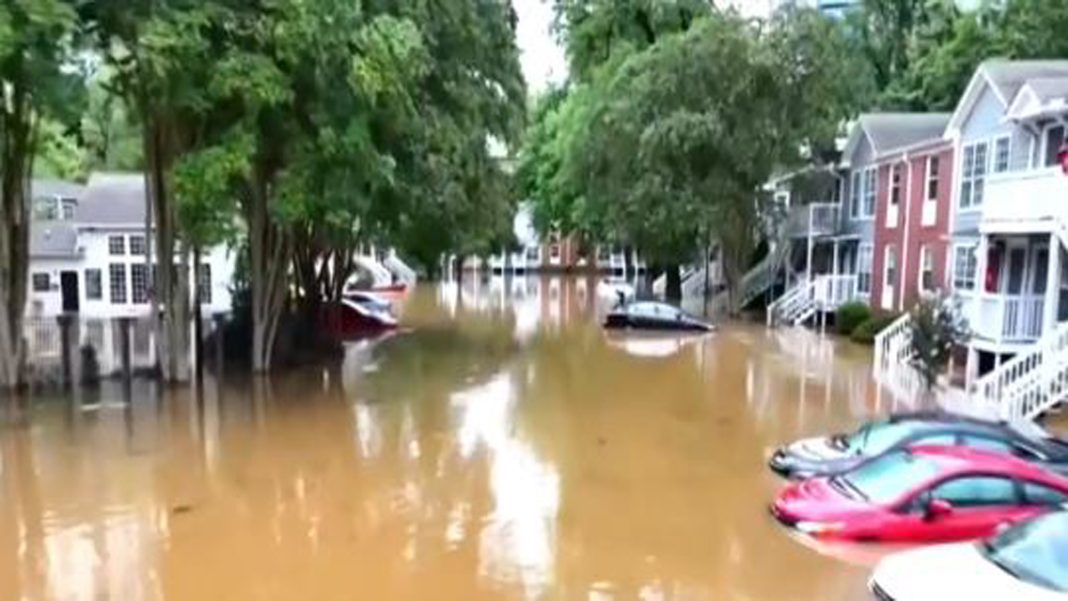In the aftermath of Hurricane Helene, a catastrophic storm that wreaked havoc across the U.S. Southeast, the community of Asheville, North Carolina, found itself grappling with an unprecedented crisis. As officials rushed to deliver essential supplies—water, food, and medical assistance—to areas left without power or cellular service, the human toll of the disaster became painfully apparent. With the death toll nearing 100, including at least 30 fatalities in Buncombe County, Governor Roy Cooper predicted that the grim statistics would likely rise as emergency responders reached isolated regions beset by collapsed infrastructure and severe flooding.
The hurricane, which made landfall as a Category 4 storm with winds reaching 140 mph, moved quickly through the region, sparking torrential rains that caused record-breaking flooding—some areas received over two feet of rain in just a few days. This deluge, described by many as the worst flooding in a century, overwhelmed creeks and rivers, leading to widespread devastation. As the storm’s remnants churned through Georgia and into the Carolinas, it left behind a trail of destruction that extended to states like Florida, South Carolina, and Virginia, where the impact was equally dire.
In Buncombe County, where the city of Asheville serves as a regional hub, officials scrambled to establish communication and coordinate relief efforts. County Manager Avril Pinder assured residents that help was on the way, stating emphatically, “We hear you. We need food and we need water.” However, access remained a significant challenge; mudslides blocked major highways, complicating the logistics of getting supplies to those in dire need. As search and rescue teams worked tirelessly, including a mission that saved 41 people trapped north of Asheville, the urgency of the situation grew.
Tragic stories emerged that underscored the human cost of the disaster. Jessica Drye Turner shared her heart-wrenching experience of waiting for help for her family members who were stranded on a rooftop as floodwaters rose around them. Despite desperate pleas for rescue, the help arrived too late, leading to the loss of her parents and young nephew. Such accounts paint a stark picture of the emotional and physical toll that natural disasters can exact on individuals and families.
As the federal government mobilized resources to assist in recovery efforts, President Joe Biden characterized the devastation as “stunning,” promising that states would receive “everything we have” to support their recovery. His administration’s commitment included a disaster declaration for North Carolina, unlocking federal funding for affected individuals. FEMA Administrator Deanne Criswell emphasized the ongoing nature of search and rescue operations in the region, noting the unique geographical challenges posed by the mountainous terrain.
While the immediate focus remained on rescue and relief, the long-term consequences of Hurricane Helene were becoming evident. Experts predict that the economic impact could range from $15 billion to $26 billion in property damage alone, according to Moody’s Analytics. Additionally, the storm has underscored broader concerns about climate change, as studies indicate that warming ocean waters are contributing to the rapid intensification of storms like Helene.
In Florida’s Big Bend, communities are beginning to dig out from the wreckage. Local churches, some without power, have adapted by holding outdoor services to foster community spirit amid the devastation. “Our God has power. That’s for sure,” reflected a parishioner from one church, encapsulating the resilience and faith that many are drawing upon in these trying times.
As communities begin the arduous process of recovery, the lessons learned from Hurricane Helene will likely inform future disaster preparedness and response efforts. With climate change continuing to reshape weather patterns, the imperative for robust infrastructure, effective communication systems, and rapid response capabilities has never been clearer. The hope is that the communities affected by this disaster will not only rebuild but also emerge stronger and more resilient in the face of future challenges.


